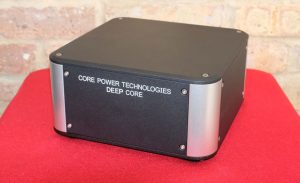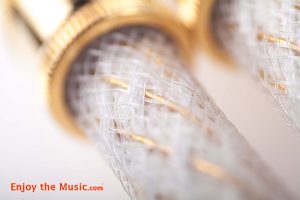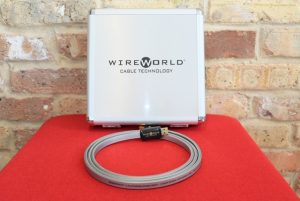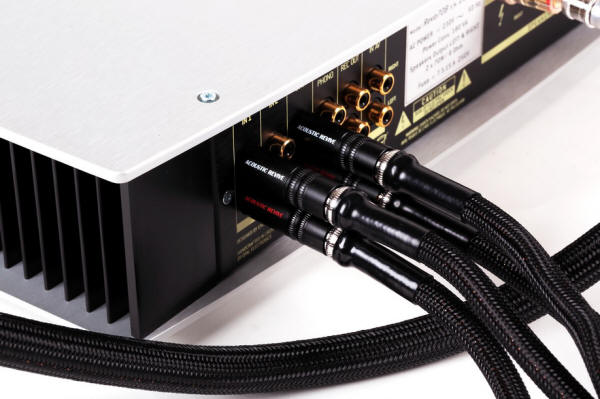
In 1986, Professor Atsumi Ohno of the Chiba Institute of Technology in Japan, a respected inventor and scientist, after years of research proposed an innovative method of producing a copper wire with unique properties. The main idea is that the wire is cast instead of being drawn. As a result, it is possible to produce cable with ultra-long copper crystals, with the average length of 125 m and diameter of 0.1 mm. This process has been since called Ohno Continuous Casting (OCC) after the name of its inventor. The rights to the invention were subsequently bought from the professor and the university by Furukawa Electric, Japan's largest manufacturer of cables for the power transmission and telecom industries. It was in Furukawa where it was observed that one of the characteristics that define audio signal transmission is distortion and noise introduced to the audio chain by wiring. To put it in proper perspective, let me remind you that it all happened well before the cable revolution that later hit the high-end audio industry.
Starting from this assumption, Furukawa developed a process of manufacturing audio cables using OCC wire with copper purity exceeding 99.9997%. The new version of the conductor was patented under the name Purity Copper OCC, or PCOCC. The "Pure Transmission" advert line was also coined around the same time and has been used since 1987 to the present day.
In the same year, Furukawa launched to the market the first three audio cables using this type of conductor: the FD-1005 Hi-Fi Audio Cord (37 wires with a diameter of 0.16 mm each), the FV-1005 Hi-Fi Video Cord (7 wires with a diameter of 0.4 mm each) and the FD-2010S Super PCOCC (2 x 37 wires with a diameter of 0.16 mm each). In addition to the first audio cables sold under its own brand, the company also offered bulk wire for third-party manufacturers that did not have the capabilities to produce their own cable wire. Those manufacturers could also order cables in their own choice of wire geometry and dielectric used. Until the year 2000, Furukawa was supplying own-branded cables. Later on, it only supplied cable wire as an OEM.
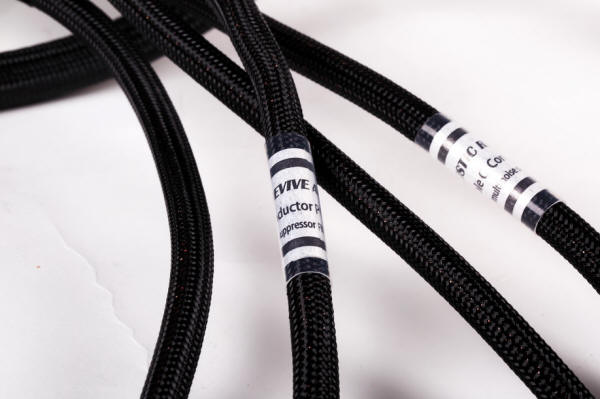
On the March 4th, 2013, a year before celebrating its 130th anniversary, Furukawa Electric announced the end of manufacture of PCOCC conductors:
Although many customers have adopted the product as a conductor of acoustic instruments, it has been difficult to maintain the business, with the annual sales volume declining because of the weak domestic market in recent years. Without the prospect of market growth, Furukawa Electric has decided to discontinue the manufacture and supply.
We take this opportunity to express our appreciation for the support you have shown this product.
You can find the whole text HERE
It is worth realizing how big an impact the decision had - and will continue to have to an even greater extent - on the audio industry. It is enough to look at the list of the leading audio cable manufacturers in this beautiful country and their product lineup. The list includes such companies as Furutech, Oyaide, Acrolink, Acoustic Revive and many others, often completely unknown in the West.
Life abhors a vacuum, however, and very soon there appeared on the market another, perhaps even more interesting proposition. Interestingly, it came from FCM (Fine Chemicals & Materials), part of the Furukawa Group and its wholly owned subsidiary.
FCM proposed copper for audio and video applications, which is obtained in a process similar to forging. As emphasized in the Acoustic Revive company literature, one of the first companies to offer complete cables using this kind of copper, the new process is clear reference to the Japanese tradition of forging swords. Copper wire is repeatedly compressed (struck), which reduces its volume by 70%. The strokes are made at a certain angle and direction, determined through experiments. This process is not so much concerned with removing copper impurities, as these would have been eliminated at an earlier stage, as with achieving the most compact arrangement of individual crystals, bridging the transitions between them, and therefore reducing a diode effect, i.e. uncontrolled electron hopping between the adjacent crystals. The repeated compression of copper also pushes out the air and oxygen molecules present in the material.
No, I'm not so smart to come up with this description on my own. It is based on the Furukawa technical materials prepared by engineers, not by audiophiles. The purity of copper obtained in this process may not seem impressive as the FCM website claims the percentage to be 99.996% or more. However, this material has a completely different structure than even the PCOCC copper. The thus obtained copper has been called PC-triple C, from Pure Copper-Continuous Crystal Construction. In the final production stage, the conductors are subjected to an aging process, where larger crystals coalesce with each other, forming monocrystalline areas.
The current Acoustic Revive product lineup includes:
RCA RCA-1.0 triple C-FM analog interconnect
XLR XLR-1.0 triple C-FM analog interconnect
PHONO-1.0 triple C-FM analog phono interconnect
RCA COX-1.0 triple C-FM digital interconnect
AES/EBU AES-1.0 triple C-FM digital interconnect
SPC- triple C-FM speaker cable
Soon, there will also be available:
POWER STANDARD-triple C-FM power cord
RAS-14 triple C-FM mains filter
SPC-REFERENCE-triple C bulk speaker cable
To produce their cables Acoustic Revive uses PC-triple C conductors from FCM, but in its own configuration and terminated with own connectors. The interconnects have a semi-balanced design, where the positive and return signal are run in two identical solid-core conductors. The latter have a smaller cross section than those used in the previously offered RCA-1.5PA interconnects and, hence, the new cables are more flexible. Shielding is provided in the form of a goosebump-type copper 'snake', covered with a black mesh. The connectors used are the excellent, rhodium plated RUR-1.
But this is not the end of innovations. Mr. Ishiguro has long experimented with components that minimize noise, but here he applied them in his cables for the first time. When we disassemble his RCA plug, we will see inside, on the "positive" conductor, a small, green "roller". This is not an ordinary ferrite ring but rather an expensive component called FINEMET (hence the 'FM' in the cable name). The owner of the patent and supplier of finished products that use this material is Hitachi Metals, Ltd. Finemet is an amorphous metal obtained by rapid cooling of a molten alloy, which comprises Fe, Si, B, and small amounts of Cu and Nb. By heating the alloy to a temperature higher than its temperature of crystallization, the metal changes its structure to nanocrystalline.
Also the cross-section of the conductors used in speaker cables is slightly smaller than before, hence they are somewhat more flexible, too. The cable ends, which are terminated with the fantastic RBN-1/RYG-1 banana or spade connectors, look different than those of the previous AR cables. The latter had transparent sleeves, and the new cables use white sleeves. They are, however, still solid-core type of cables.
The new cables have not yet been widely tested and reviewed. Mr. Ishiguro has taken care, however, that they are received by Japanese journalists from 14 audio magazines to (anonymously) express their opinions. As appears from the English translation that I have received, their reactions were enthusiastic.
To conclude this section, here is the Acoustic Revive cable upgrade list:
RCA-1.5PA → RCA-1.5 triple C-FM
XLR-1.5PA → XLR-1.5 triple C-FM
COX-1.5PA → COX-1.5 triple C-FM
SPC-PA → SPC-triple C
Acoustic Revive previously featured in High Fidelity
• INTERVIEW: Ken Ishiguro – owner, designer, see HERE
• REVIEW: Acoustic Revive – anti-vibration system, see HERE GOLD Fingerprint Award
• KRAKOW SONIC SOCIETY, meeting no. 76: Acoustic Revive – anti-vibration and isolation accessories, system, see HERE
• REVIEW: Acoustic Revive RTP-4eu ULTIMATE + POWER REFERENCE - power strip + AC power cord, see HERE
• REVIEW: Acoustic Revive USB-1.0SP/USB-5.0PL – USB cable, see HERE
• REVIEW: Acoustic Revive RST-38 i RAF-48 – isolation boards, see HERE
• REVIEW: Acoustic Revive Disc Demagnetizer RD-3, Grounding Conditioner RGC-24, see HERE
• REVIEW: Acoustic Revive DSIX/1.0 - 75 Ω digital cable, see HERE
SOUND
Albums auditioned during this review
• Patrick Noland, Peace, Naim Audio naimcd065, CD (2002).
• Jerzy Milian Trio, Bazaar, Polskie Nagrania "Muza"/GAD Records GAD CD 017, "Polish Jazz vol 17", CD (1069/2014).
• Vangelis, Spiral, RCA/BMG Japan 176 63561, K2 SHM-CD (1977/2008).
• Count Basie, Cheek to Cheek, TIM The International Music Company 204549-202, "Past Perfect. 24 Carat Gold Edition", gold-CD, (2000).
Using something on a daily basis, something that is of a good quality and does its job well, and meets our needs, we tend to forget its existence. That is, we are aware of having it yet this awareness manifests in our confidence and peace of mind, directly resulting from the fact of using it. Even driving a luxurious 100,000 USD limousine on an everyday basis, we get used to it after some time and it becomes something perfectly normal. We stop "hearing" how soundproof the interior is or notice its performance, nor are we any longer surprised at how comfortable it is. We take it all for granted.
I believe that each one of us, audiophiles and music lovers, could think of at least one audio product that would make for such a "tacit support." When everything changes in our audio system, when we try to determine this or that new component, our "friend" is still there, it really IS.
I do have quite a few such products in my reference system. Actually, come to think about it, they all belong to that category. Using them, I don’t need to worry about anything and I trust them. There are better components on the market, I have no doubt about it whatsoever. Not "much" better, though, but simply "a bit" better and mostly just "different." And all of them are much, much more expensive. Sooner or later, I will most likely replace the front end, preamplifier, power amplifier, cables and isolation accessories. However, I will have to seriously consider if the change makes sense i.e. whether the improvement of certain sonic aspects will not cost me something I already have. The fact that something is better does not always mean it is better for us.
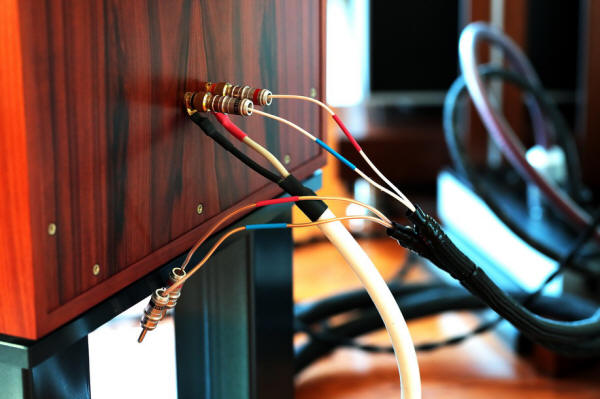
One component of my reference system that does not get much attention, even though I use it each time I review electronics, are Acoustic Revive cables: the RCA-1.8PA interconnect, the XLR-1.8PA interconnect and the SPC-PA speaker cable (the numbers in their names denote their length, respectively). I have owned them for two years now and every amplifier and every source I have reviewed had the chance to meet them. In the footer under the text of the review ("reference system"), I list them as part of the "system II". My main cables are the Siltech Royal Signature Series Double Crown Empress interconnect and the speaker cable has always been the Tara Labs Omega Onyx. But there have been countless occasions when the Acoustic Revive cables were much handier and they would then become the "system I."
Despite all that, I have never officially reviewed them. How stupid of me! I should have said all the good things and not hide it from others. I should have praised them more and their part in shaping the sound of even very expensive audio components and systems.
I have, however, been given a second chance from fate, or rather from Acoustic Revive, to mend that. The new cables were created out of necessity; they are not a development version of the former models and they open a brand new chapter for the company. This time I will not fail and will try to describe in a few words how they differ from other reference cables – the Siltech and Tara Labs. Mr. Yoshi Hontai, the Acoustic Revive representative, sent me the cables just after the first batch had been completed. That is why this is the first complete review of the Triple-C FM cables in the world and (almost) definitely the first on in English.
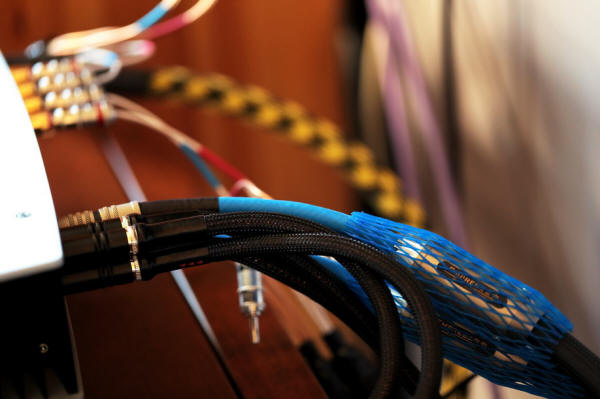
"In a few words" is a deliberate phrase. Their character, if one knows the former version, is easy to pinpoint and describe. As are the changes they bring into the system. Hence, there is no need to elaborate too much.
The sound is more open and more energetic in the midrange and in the treble than with the PCOOC-A cables. The new cables are not brighter, though. We are dealing here with something different than just a change of tonal quality. The new connects are much better resolving and differentiating. The older ones do not seem to lack anything in that department, until we compare them with something far more expensive or with the Triple-C FM. Then you can hear that the sound is covered with a hint of patina. Had they been cables of some lesser quality, I would have said that the sound comes as if from behind a curtain. But we are talking high-end here and the things that, at the first glance of an untrained eye, seem to be one thing, turn out to be something different after "learning" the new sound and after being given time for accommodation and "training". That is why the word "patina" describes precisely what I have in mind. It is a "noble" and even desirable patina. At the same time, it is not entirely transparent and it affects and changes everything it covers.
Surprisingly, even though both the old and new Acoustic Revive cables are so different their sonic texture remains the same. Using any other cable, even the Tara Labs or the Siltech, we can pinpoint the differences in a blink of an eye. They are structural in character, i.e. they influence the perception of the sound as a whole, and of the way we approach the sound. Both the old and new cables from Acoustic Revive seem to share some common "ground". It has to be none other than Mr. Ken Ishiguro himself, the owner of the company, who made the Triple-C cables a better version of those that used PCOOC-A conductors, at the same time striving not to depart too far from the "blueprint" developed over the years. After all, he uses his own cabling in his numerous excellent audio systems (you can find more information about Mr. Ishiguro’s systems HERE).
As I have said, the sound with the new cables is more open. This is a rather big lap and deep change. The new version is more detailed, which is fine with me. In my opinion, the detailness in itself is a sonic distortion and one of the more irritating at that, often to the point of disqualifying a given product. If you play a recording and at first you hear details and only then the whole, it means that you are in a deep s…. Pardon my French but it is better to shake it off here and now than to follow the futile path and waste your life on poor sound and incomplete music.

The Triple-C FM brings lots of detail, more than the older version. Details have their role to play and impressing the listener is definitely not the one. They do what they are supposed to do in every good product like the Siltech and the Tara Labs: they build up a rich presentation. The new cables bring "life" to the system, make it change from one CD to the other. In an extremely profound way they change the soundstage depth, which is exceptionally difficult to achieve in audio. Here it is served effortlessly, because we are still talking about the sound that is vivid and "ductile." The tonality is great. The tonal balance is a bit higher than before but not much. A big energy in the midrange and at the top end results in perceiving the cables as more distinctive and explicit. Certainly not brighter; that is not what I mean.
Let us now talk about how the Acoustic Revive are different from more expensive cables and about a few things that were good in the PCOOC-A cables. The former flagship cables from Mr. Ishiguro seemed to sound denser. The new ones do not lack anything but the greater amount of information that they offer causes them not to be so unequivocally silky smooth. Fewer details combined with a slightly rounded attack resulted in a milder and friendlier sound of the previous model. The new cables have something in the sonic "foundation" that makes them easy to fit any audio system. But it is now combined with more precisely defined edges so the system needs to be more "civilized" than before in order not to overemphasize them.
My reference cables have a deeper sound and darker background. And a better dynamics. But their character is close to what the cables from Japan show. It is based on the harmony of the opposites, like open-dark or resolving-homogeneous.
The new Triple-C FM cables are not a change for change’s sake. Created out of necessity, they bring in a real sonic improvement, at the same time maintaining the "trademark" Acoustic Revive sound. They are open and distinctive but smooth and dense as well. They have a very natural way of handling the rhythm and incredible dynamics. The bass is not as dense as before but it is audible that previously it was warmer and not as well differentiated, which made it seem larger. That must be one of the most important changes in any Acoustic Revive product I have ever come across.
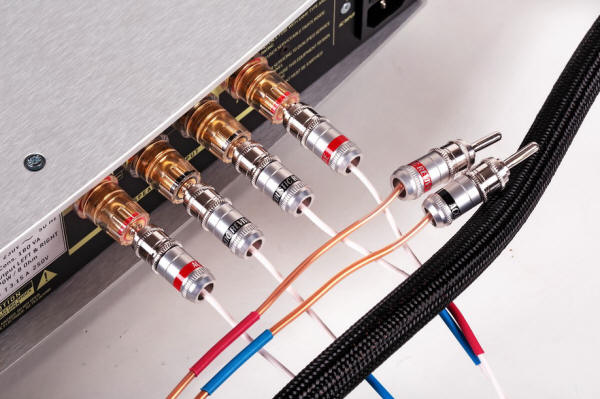
Conclusion
I was planning for a few words but it came (turned) out as usual. For the purpose of this review, this time I only auditioned four albums. Over and over again, but there were only four of them. The changes that I managed to isolate were reproducible. Swapping the cables under review in different systems, and with various products, also brought reproducible results. Hence, what I am writing will be equally important in any audio system, not limited to my own.
New does not always mean better, although we expect nothing less than that of major audio manufacturers. Acoustic Revive is a company I trust. It has won my trust with its exceptional products and the philosophy behind them. I do not, therefore, look at it as my opponent, which is sadly quite common in the audio industry, or as someone that wants to extort money from me. If Acoustic Revive changes anything, it's because it has something better to offer, which has been approved by its owner, and which he uses in his own systems (several of them). Even if I do not always understand it immediately, I tend not to reject it or rule out on the spot, but rather try to figure out what's going on. That is how trust works and it has never failed me. To find such a company, such a person, is like winning the Lottery. A well-deserved RED Fingerprint Award.
Prices (in Poland):
9,900 PLN/1.5 m (6,990 PLN/1 m)
14,900 PLN/2.5 m
SEKIGUCHI MACHINE CO., LTD.
Yoshi Hontai | MuSon Project, Inc.
[email protected]
www.acoustic-revive.com
US Distributor
The Lotus Group
www.lotusgroupusa.com
MADE IN JAPAN
Text and images by Wojciech Pacuła,
Translation by Andrzej Dziadowiec












